Compared: Apple Studio Display vs. 2011 Thunderbolt Display
We pulled our 2011 Thunderbolt Display out of storage to compare it against Apple's all-new Studio Display.
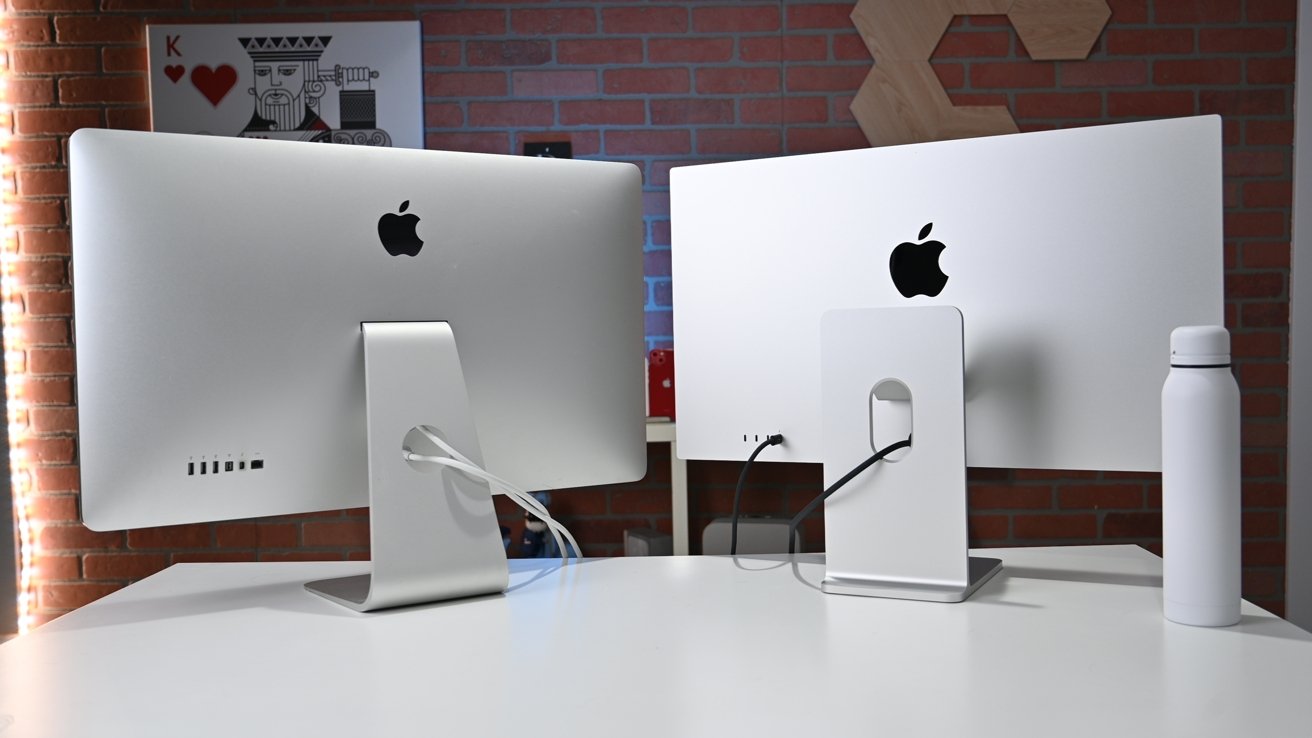
Apple's 2011 Thunderbolt Display compared to the Studio Display
Apple killed off its Thunderbolt Display in 2016, leaving a void in the market. Apple didn't introduce a new option until 2020 with the Pro Display XDR. But this display carries a massive price tag and wasn't a true replacement for the more affordable Thunderbolt Display.
Enter -- the Studio Display.
In 1998, Apple launched the original Studio Display. These 3:4 format displays were available for a year before they were sold alongside Apple's Cinema Display. The Cinema Display eventually replaced the Studio Display and was sold from 1999 to 2011.
It was in 2011 that Apple launched the Thunderbolt Display. At the time, Apple touted that it had created the world's first Thunderbolt-enabled display. One of the cool features was that two of these displays could be daisy-chained together and connect to your Mac with a single cable.
Otherwise, it had an expansive 27-inch panel, an all-metal body, and it eventually replaced Apple's legacy Cinema Display.
We picked up one of those Thunderbolt Displays at launch and happen to have it still hanging around our studio.
Design and build
Both displays are made of anodized aluminum, though the Studio Display has much slimmer bezels, is overall thinner, and weighs notably less.
The Thunderbolt Display has an older version of Apple's stand that was used with several generations of iMac. Users had the option of picking up a VESA adapter kit should they prefer to mount the monitor.
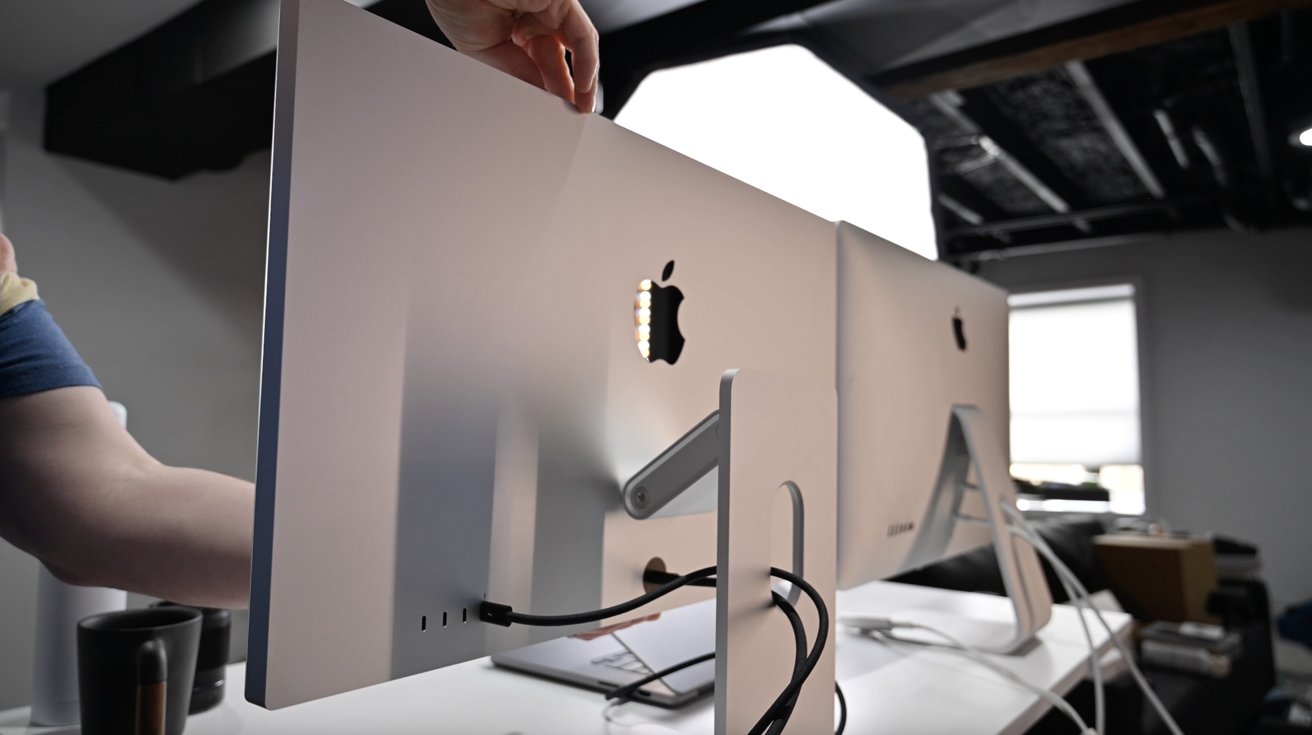
Studio Display stand
With the Studio Display, Apple provided three stand options. The main tilt stand is similar to the 24-inch iMac, but the height-adjustable version is more akin to the Pro Stand found with the Pro Display XDR. There's a VESA option too though you'll need to decide which one you want at the time of purchase.
On the back of the Thunderbolt Display, Apple included:
Thunderbolt Display ports
The MagSafe cable is integrated into a perpetually-connected Thunderbolt cable to charge your portable Mac. With the advancements in Thunderbolt, the new Studio Display can deliver up to 96W of power over the single, removable Thunderbolt 3 cable.
Apple drastically simplified the ports with the Studio Display, only including three 10Gb/s USB-C ports. Because of Thunderbolt data limitations, it isn't possible to daisy chain two 5K studio displays like you could the Thunderbolt Display.
Resolution and image quality
The Thunderbolt Display had a resolution of 2560 by 1440 pixels, while the Studio Display doubles that, measuring in at 5120 by 2880. That gives the Thunderbolt Display a pixel density of 108 pixels per inch, and the Studio Display a Retina-quality 218 PPI.
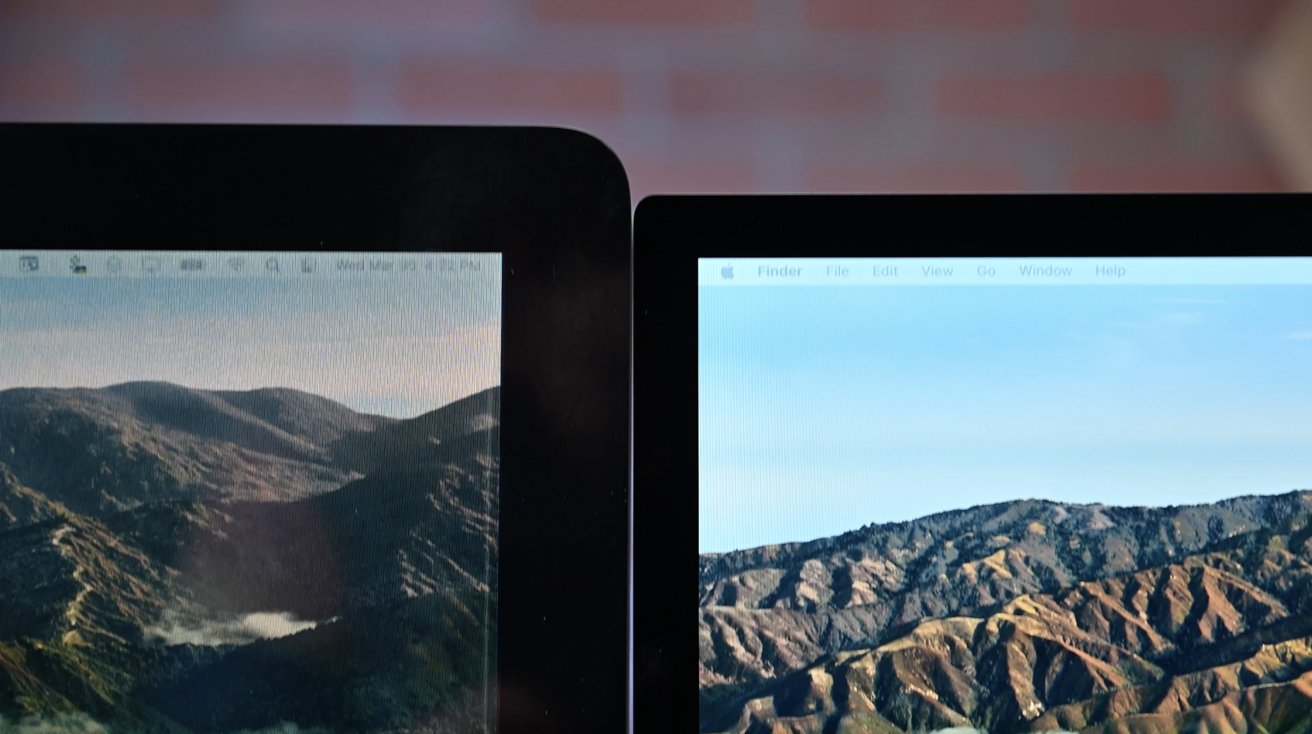
Closeup of both Apple displays
For contrast ratio, the Studio Display has a 1200:1 ratio and the Thunderbolt Display has a 1000:1 ratio. Only a modest improvement for Apple's newest monitor.
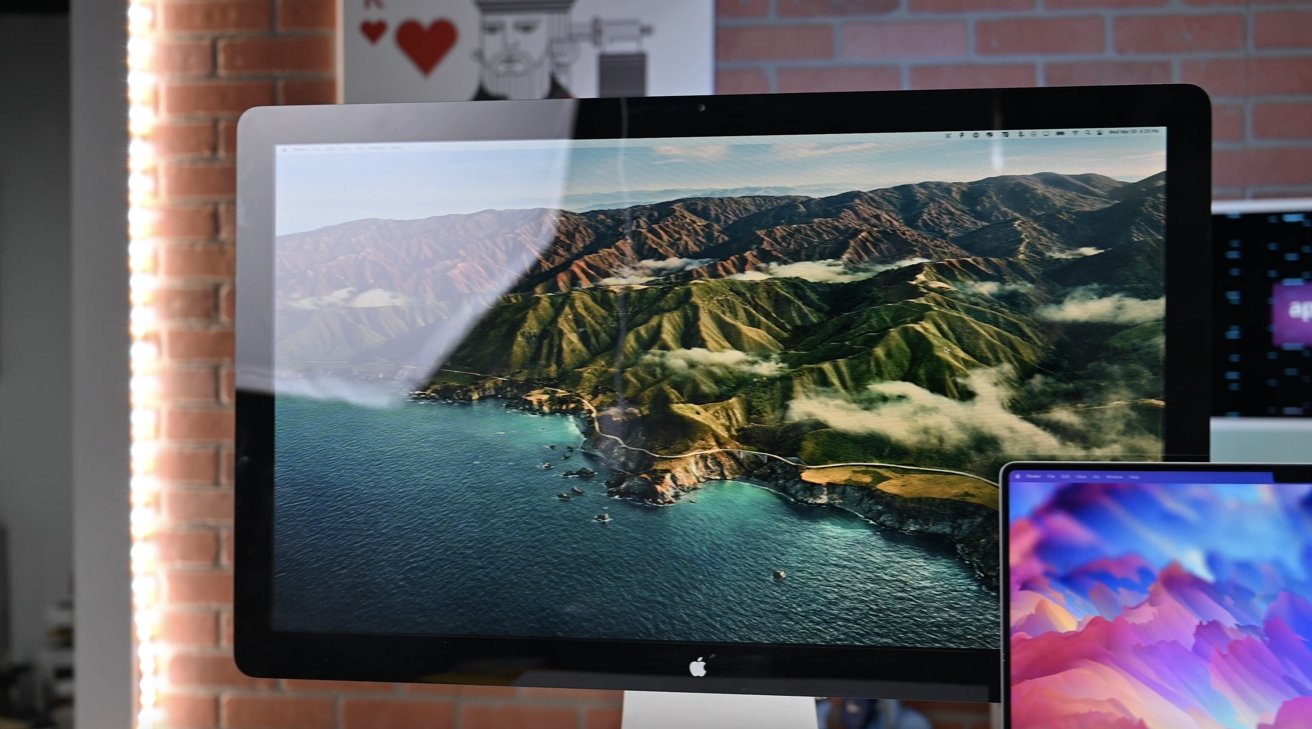
Thunderbolt Display
Looking at them side by side, both displays look good. But the Thunderbolt Display looks a bit dated. It is inset further back from the front glass and it doesn't meet Apple's definition of Retina as the pixels are discernable while sitting from a normal distance.
It also has a slight yellow tint to the image, which may result from the ravages of time. Obviously, the newer Studio Display appeared more accurate.
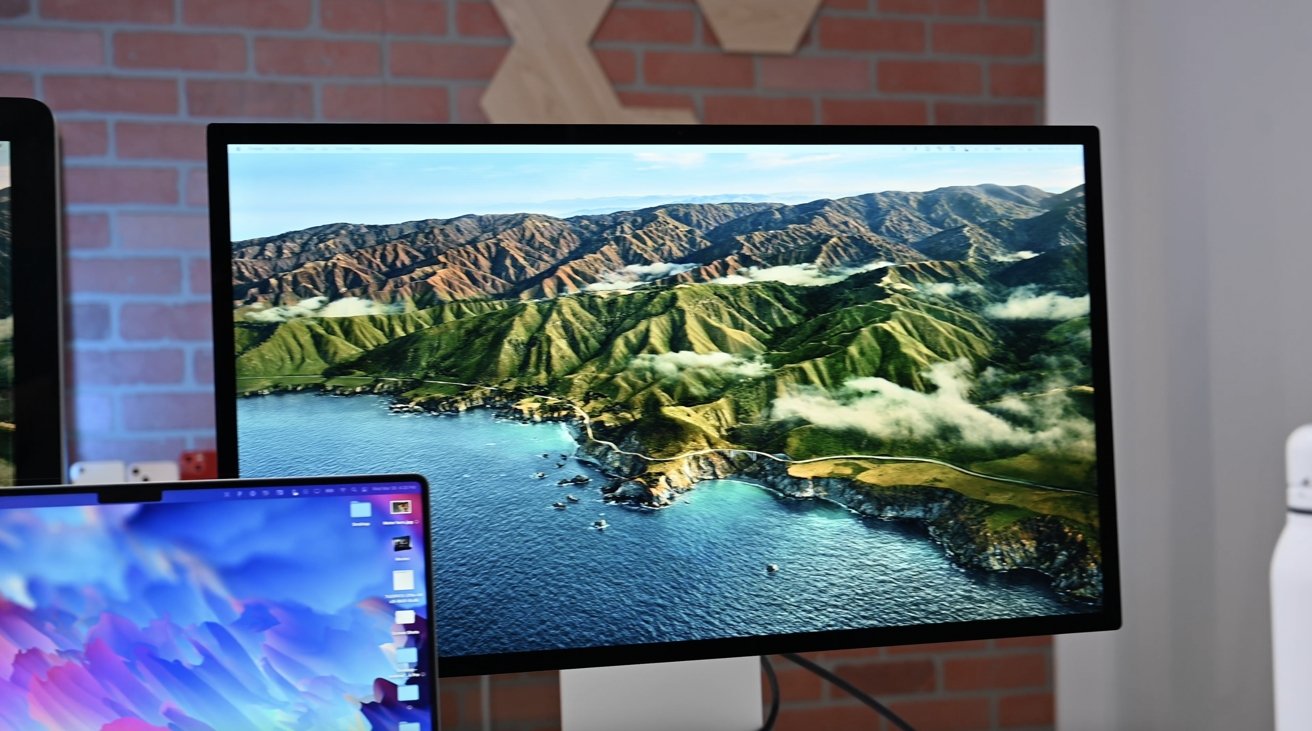
Studio Display
Another big difference is brightness. Apple only had a peak brightness of 325 nits with the Thunderbolt display but the Studio Display can reach up to 600. This was readily apparent when we maxed out both displays.
Cameras, mics, and speakers
Each of the displays has built-in AV peripherals. They have cameras integrated into the top, multiple speakers, and high-quality microphones.
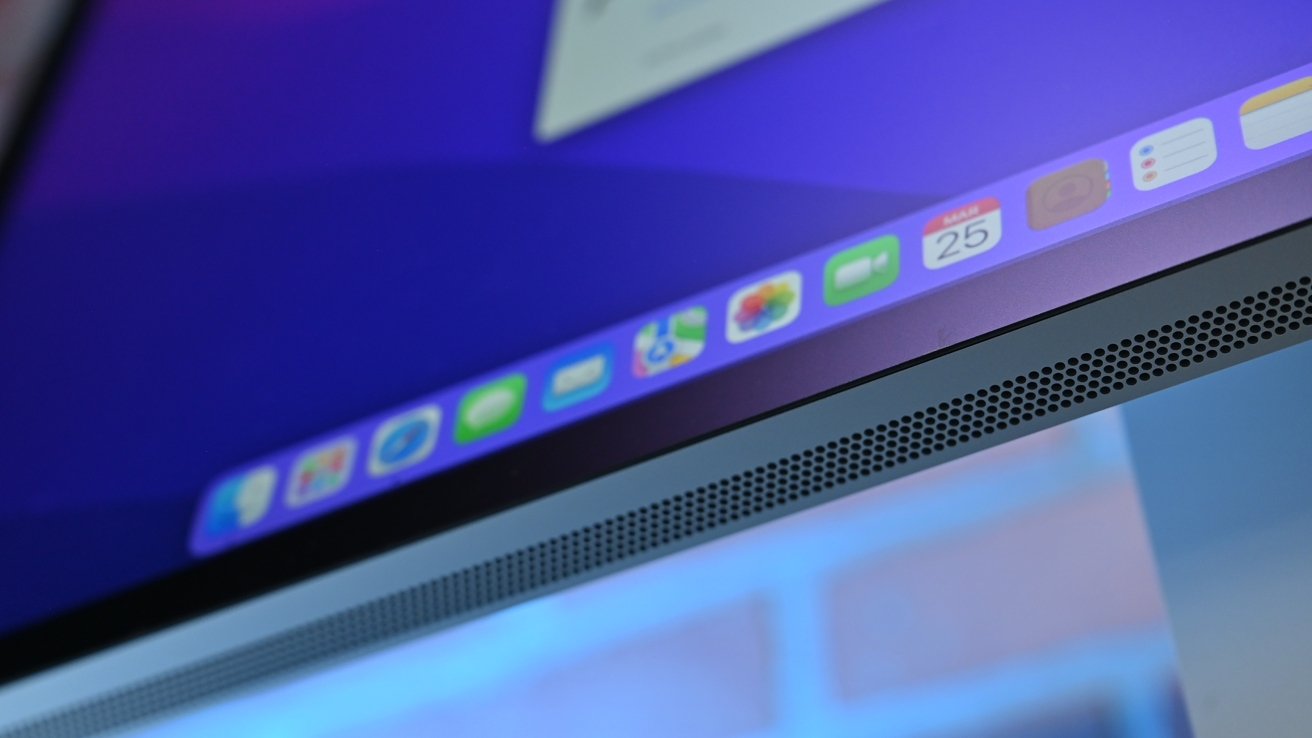
Studio Display speakers
On the Studio Display, Apple has a six-speaker array, capable of putting out above-decent sound. It's the best-sounding monitor that we've tested to date. It also is capable of Spatial Audio, to some degree.
Conversely, the Thunderbolt Display has a 2.1 stereo set of speakers that don't sound half bad for their age.
That Thunderbolt Display has what Apple calls a FaceTime HD camera built-in. This is only a 720p camera, which technically counts as HD. This is below the 1080p resolution of the Studio Display's camera.

You can see the dramatic difference in the cameras in the shots above. Some issues have been reported on Apple's Studio Display camera, but here it looks miles ahead.
The Studio Display has a 122-degree field-of-view, portrait mode, and Center Stage.
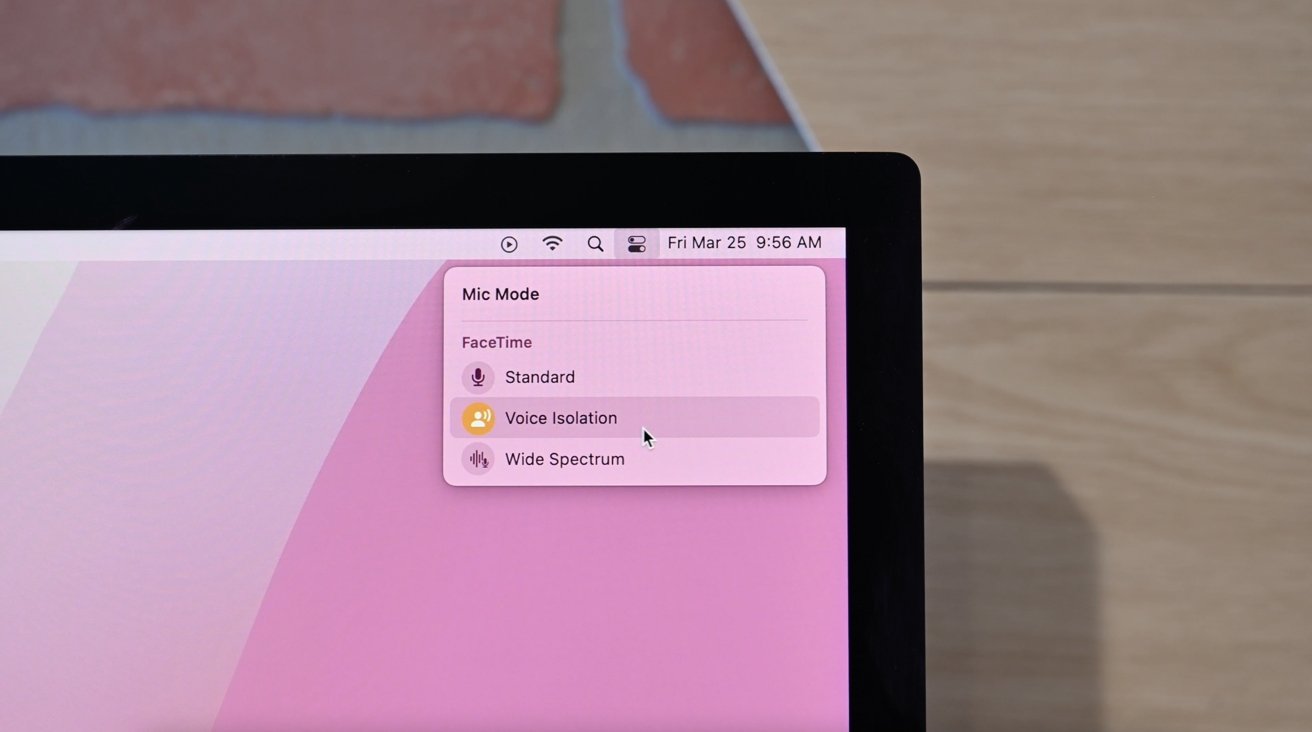
Studio Display offers voice isolation
There is a single mic on the top of the Thunderbolt Display and a trio of microphones on the Studio Display. The Studio Display's microphone array can isolate your voice too, which helps in noisy environments.
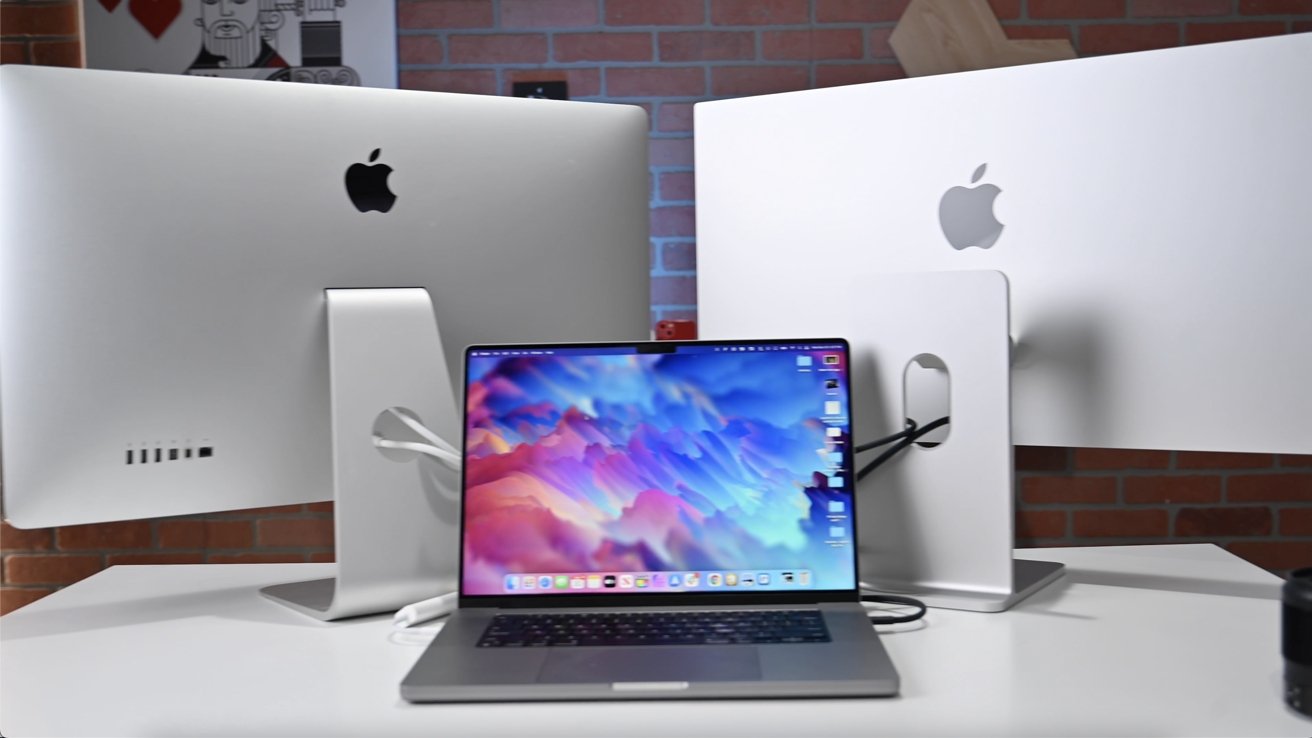
Apple's two Thunderbolt displays
Building on the Thunderbolt Display, Apple has added some unique features. For example -- the nano-texture glass option can drastically reduce glare.
Much is attributed to the A13 Bionic chip that drives the Studio Display, such as voice isolation, Center Stage camera tracking, hey Siri support, and video portrait mode.
We loved using the Thunderbolt Display, and so far, we're enjoying the Studio Display.
Need help redeeming the coupon? Here are step-by-step activation instructions.
You can also order the Studio Display at these retailers: Alternatively, you can find Apple's Thunderbolt display on eBay.
Read on AppleInsider

Apple's 2011 Thunderbolt Display compared to the Studio Display
Apple killed off its Thunderbolt Display in 2016, leaving a void in the market. Apple didn't introduce a new option until 2020 with the Pro Display XDR. But this display carries a massive price tag and wasn't a true replacement for the more affordable Thunderbolt Display.
Enter -- the Studio Display.
Thunderbolt Display
Apple has a long history of pumping out high-quality, Mac-specific displays. Users may have forgotten this with the introduction of the 2022 Studio Display, but it strongly follows the precedence Apple set for itself.In 1998, Apple launched the original Studio Display. These 3:4 format displays were available for a year before they were sold alongside Apple's Cinema Display. The Cinema Display eventually replaced the Studio Display and was sold from 1999 to 2011.
It was in 2011 that Apple launched the Thunderbolt Display. At the time, Apple touted that it had created the world's first Thunderbolt-enabled display. One of the cool features was that two of these displays could be daisy-chained together and connect to your Mac with a single cable.
Otherwise, it had an expansive 27-inch panel, an all-metal body, and it eventually replaced Apple's legacy Cinema Display.
We picked up one of those Thunderbolt Displays at launch and happen to have it still hanging around our studio.
Some familiarities with some modern upgrades
There are many similarities between both of these displays. Each of these Apple displays measures up to 27 inches on the diagonal and connects to your Mac via Thunderbolt. Albeit different generations of the high-speed connector.Design and build
Both displays are made of anodized aluminum, though the Studio Display has much slimmer bezels, is overall thinner, and weighs notably less.
The Thunderbolt Display has an older version of Apple's stand that was used with several generations of iMac. Users had the option of picking up a VESA adapter kit should they prefer to mount the monitor.

Studio Display stand
With the Studio Display, Apple provided three stand options. The main tilt stand is similar to the 24-inch iMac, but the height-adjustable version is more akin to the Pro Stand found with the Pro Display XDR. There's a VESA option too though you'll need to decide which one you want at the time of purchase.
On the back of the Thunderbolt Display, Apple included:
- Three USB-A
- FireWire 800
- Gigabit Ethernet
- Thunderbolt
- MagSafe cable -- 85W

Thunderbolt Display ports
The MagSafe cable is integrated into a perpetually-connected Thunderbolt cable to charge your portable Mac. With the advancements in Thunderbolt, the new Studio Display can deliver up to 96W of power over the single, removable Thunderbolt 3 cable.
Apple drastically simplified the ports with the Studio Display, only including three 10Gb/s USB-C ports. Because of Thunderbolt data limitations, it isn't possible to daisy chain two 5K studio displays like you could the Thunderbolt Display.
Resolution and image quality
The Thunderbolt Display had a resolution of 2560 by 1440 pixels, while the Studio Display doubles that, measuring in at 5120 by 2880. That gives the Thunderbolt Display a pixel density of 108 pixels per inch, and the Studio Display a Retina-quality 218 PPI.

Closeup of both Apple displays
For contrast ratio, the Studio Display has a 1200:1 ratio and the Thunderbolt Display has a 1000:1 ratio. Only a modest improvement for Apple's newest monitor.

Thunderbolt Display
Looking at them side by side, both displays look good. But the Thunderbolt Display looks a bit dated. It is inset further back from the front glass and it doesn't meet Apple's definition of Retina as the pixels are discernable while sitting from a normal distance.
It also has a slight yellow tint to the image, which may result from the ravages of time. Obviously, the newer Studio Display appeared more accurate.

Studio Display
Another big difference is brightness. Apple only had a peak brightness of 325 nits with the Thunderbolt display but the Studio Display can reach up to 600. This was readily apparent when we maxed out both displays.
Cameras, mics, and speakers
Each of the displays has built-in AV peripherals. They have cameras integrated into the top, multiple speakers, and high-quality microphones.

Studio Display speakers
On the Studio Display, Apple has a six-speaker array, capable of putting out above-decent sound. It's the best-sounding monitor that we've tested to date. It also is capable of Spatial Audio, to some degree.
Conversely, the Thunderbolt Display has a 2.1 stereo set of speakers that don't sound half bad for their age.
That Thunderbolt Display has what Apple calls a FaceTime HD camera built-in. This is only a 720p camera, which technically counts as HD. This is below the 1080p resolution of the Studio Display's camera.

You can see the dramatic difference in the cameras in the shots above. Some issues have been reported on Apple's Studio Display camera, but here it looks miles ahead.
The Studio Display has a 122-degree field-of-view, portrait mode, and Center Stage.

Studio Display offers voice isolation
There is a single mic on the top of the Thunderbolt Display and a trio of microphones on the Studio Display. The Studio Display's microphone array can isolate your voice too, which helps in noisy environments.
Only one is available now
Despite being discontinued in 2016, the Thunderbolt Display still looks surprisingly good. Its design isn't bad, the picture looks good, and it has quite a few good bells and whistles baked in.
Apple's two Thunderbolt displays
Building on the Thunderbolt Display, Apple has added some unique features. For example -- the nano-texture glass option can drastically reduce glare.
Much is attributed to the A13 Bionic chip that drives the Studio Display, such as voice isolation, Center Stage camera tracking, hey Siri support, and video portrait mode.
We loved using the Thunderbolt Display, and so far, we're enjoying the Studio Display.
Where to buy
Apple Studio Display prices start at $1,599 for the standard glass model, topping out at $2,299 for the nano-texture glass with a tilt- and height-adjustable stand. Apple Authorized Reseller Adorama is knocking $50 off AppleCare for the new display with this activation link and promo code APINSIDER.Need help redeeming the coupon? Here are step-by-step activation instructions.
You can also order the Studio Display at these retailers: Alternatively, you can find Apple's Thunderbolt display on eBay.
Read on AppleInsider


Comments
But in fact the Thunderbolt monitor's octopus cable was known for breaking its internal conductors over time and having to be replaced. Some disassembly required. I've still got a spare in a box somewhere.
My Mac Studio isn’t scheduled to arrive until next week. So my son gets to use the Studio Display with his M1 MacBook Air for a week or so. It was plug and play. He’s going to hate it when my M1 Max Mac Studio arrives.
These are fantastic monitors and for regular everyday use they are still great monitors that I would gladly continue using.
I have a 27-inch Dell QHD resolution monitor, which is 2560x1440 pixels. That's the same resolution as the original Thunderbolt Display and Apple's 27-inch iMacs from the 2009 to 2013 models. (The 2014 edition of the 27-inch iMac was the first Retina 5K model at 5120x2880 pixels.)
I have an Apple Studio Display on order. I'm hoping that I'll need only connect one cable (from the Studio Display's one Thunderbolt port) to my MacBook Pro (14-inch, 2021) and that the one cable will provide the MacBook both with power and with connections to two monitors — the Studio Display and a 27-inch Dell monitor with USB-C and QHD resolution. In other words, the chain would be: 14-inch MacBook Pro <—> Thunderbolt cable <—> Apple Studio Display <—> USB-C cable <—> Dell U2721DE monitor, if that works.
Thanks for any info!
“8K Ultra HD” = 7680x4320 (4x 1080p; 6x 720p)
720p (“HD”) = 1280x720
5K = 5120x2880 (4x 720p)
720p is the original HD standard, or 1K. 2x 720p is 2K (Thunderbolt Display, etc.)
Thus, relative to this, 1080p is 1.5K, “Ultra HD” is 3K, and “8K Ultra HD” is 6K.
The thing Apple calls “5K” should have been called 4K. But that was already in use for Ultra HD. So Apple used 5K, following the same principle (rounding off the horizontal pixel count).
This really makes me wonder what the rumored “7K” Pro Display might be. I’m thinking the new display will be what the industry has named 8K — in Apple’s terms, that same pixel count would be 5K + 2K = 7K …
In my unasked for categorisation of Apple products, the Apple Studio Display is slotted into the same group as the trash can Mac Pro, the butterfly keyboard single port rMB, the 2016 MBPs, the HomePod, and the Airpods Max as the last decades’ grossly overpriced and function compromised misses.
PS: and one other thing. And it isn’t a small thing. When the Thunderbolt Display came out, daisy chaining a pair with a single Thunderbolt cable was really cool. Nowadays it is easy to do on windows with any computer using displays with multi stream transport (MST) support. Apple does not support MST, insisting thunderbolt is the only way to do this (although even that isn’t clear on the new ASD, but otherwise you have to do a second cable to your computer if you want to add a second, non Thunderbolt display). Very, very annoying on a laptop, and if Apple isn’t prepared to provide a reasonably priced Thunderbolt Display, then it should enable MST support so we can do it over DisplayPort.
Sounds like you want a basic, plastic monitor, man. Go get one, who's stopping ya?
sure, who cares with a desktop like a Mac studio how many cables it needs out the back? The point though is that you do only want one laptop cable. And a dock isn’t a solution if you have to buy it on top of the displays When you can easily use the display ports instead of a seperate dock. Some of us like to minimise cables.
$1500 would be OK if it came standard with the optional extras and actually, you know, had little things like beta camera software actually sorted. Outstanding would be if it was priced the same as the ancient LG.
I am curious what apple gurus think are the downsides of this setup (mini+M8-monitor)
tx
The three additional USB-C ports on the back are USB 3.2 Gen 2 (formerly known as USB 3.1), which can be either USB-A or USB-C. I think, by definition, they provide at least 7.5W power -- one of them is charging my phone right now. So think of them as USB-A ports -- you wouldn't plug a display into one of those. You could try it, though, before you do the following...
You'll need a powered hub to do what you want to do. The good news is that hub will be your best friend. There are several CalDigit Thunderbolt 4 hubs, but if you want Ethernet then you'll want the TS4 (in theory the TS3+ would work for your setup, but you'd need to make sure it is supported):
https://appleinsider.com/articles/22/02/16/caldigit-ts4-thunderbolt-hub-review-the-dock-of-our-dreams
I don't think john-useless's requirement is to power the monitor via USB. Only portable monitors usually allow that.
* https://www.apple.com/studio-display/specs/